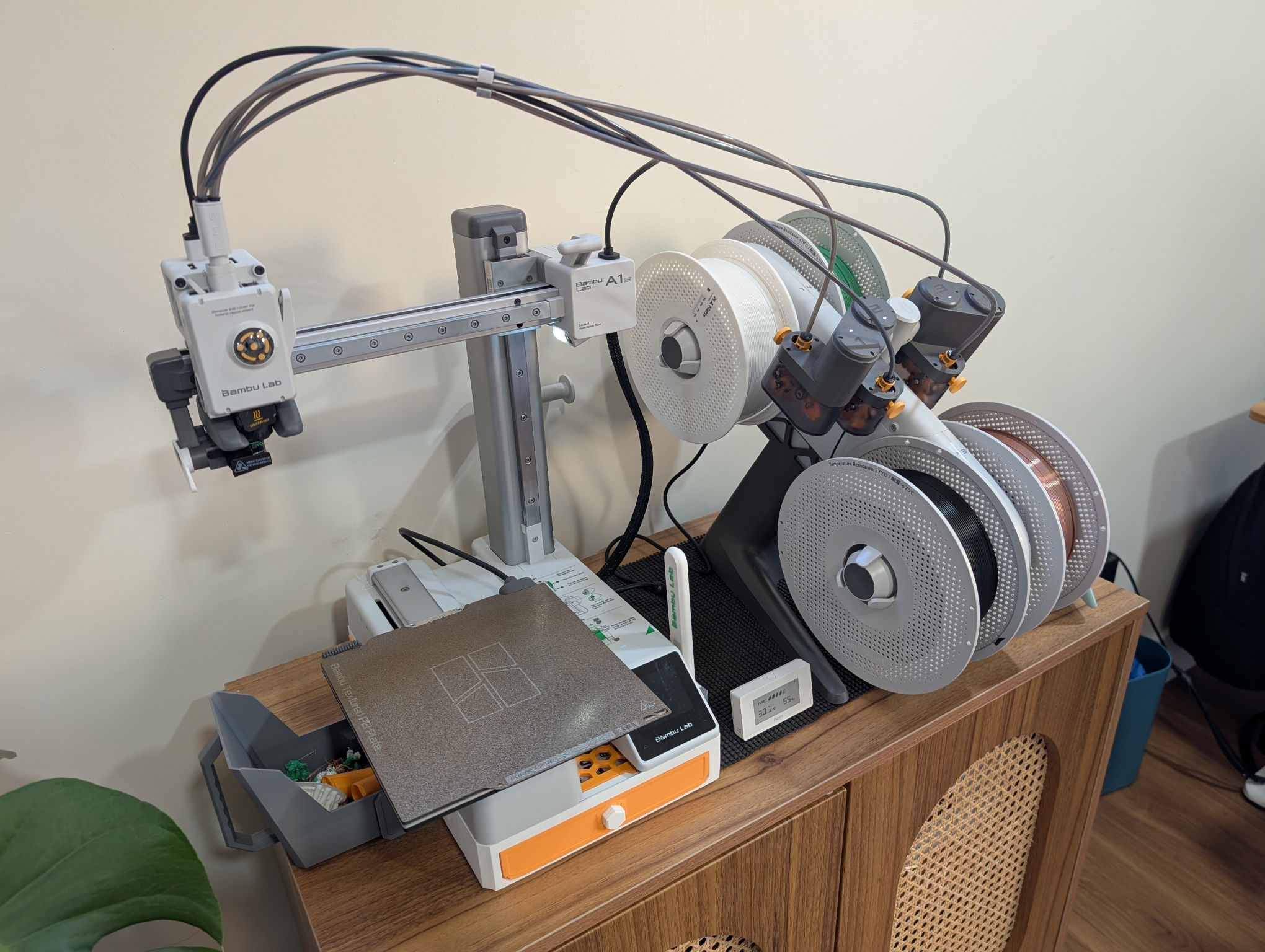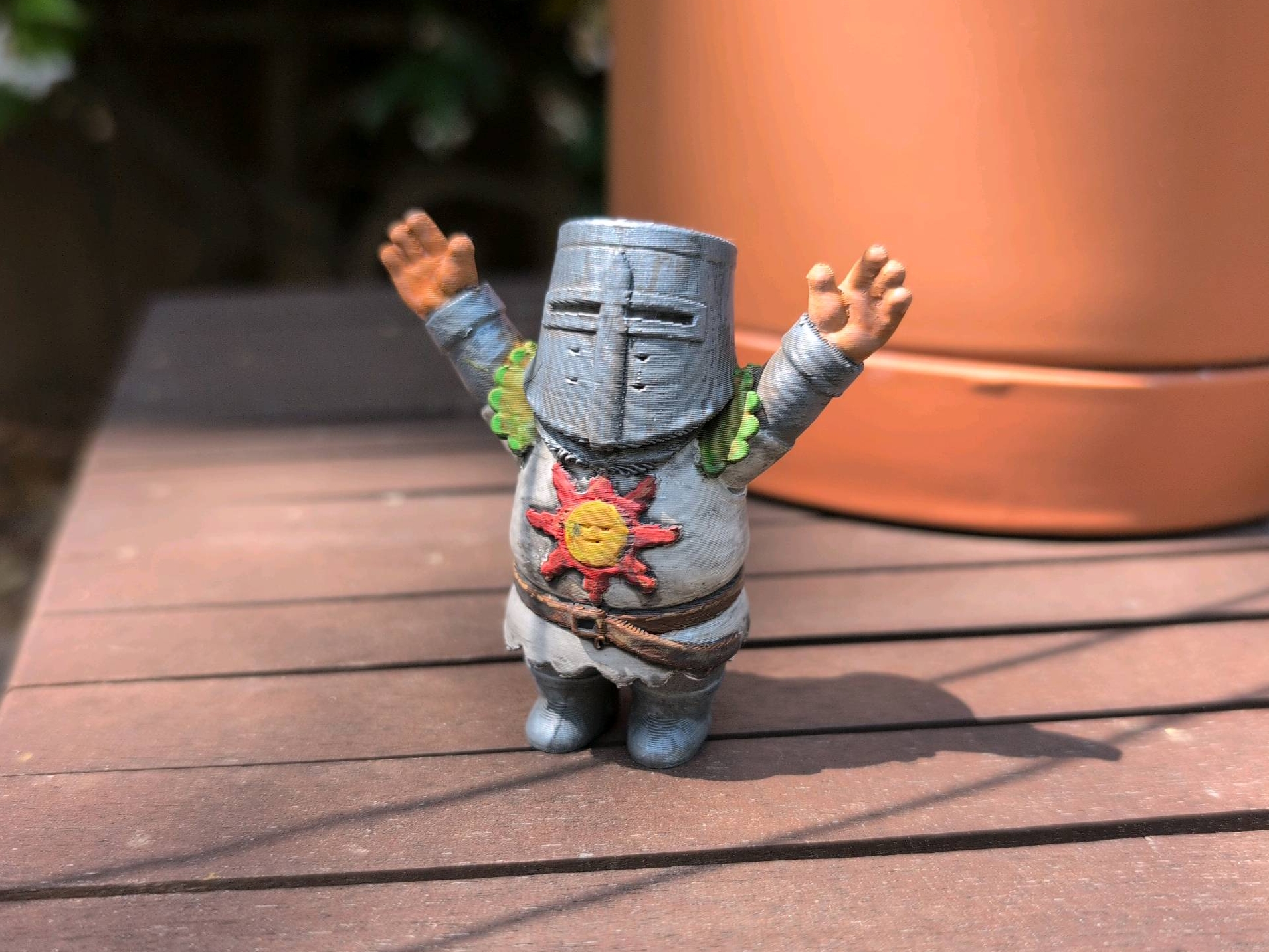Thoughts on 3D printing
A few months back my wife gifted me a 3D printer: an entry level Bambu Lab A1 Mini. It’s a really cool little machine - it’s easy to set up, and it integrates with Maker World - a vast repository of free 3D models.

Now that I’ve lived with a 3D printer for nearly half a year, I’d like to share what I’ve learned.
It’s not a free stuff machine
After booting up the printer, printing benchy - a little boat which tests printer calibration settings, and seeing thousands of incredible designs on Bambu Lab’s Maker World - I thought I will never have to buy anything ever again.
I was wrong.
While some stuff printer on a 3D printer is fantastic, it’s not always the best replacement for mass produced objects. Many of the mass produced plastic items are using injection molding - liquid plastic that gets poured into a mold - and that produces a much stronger final product.
That might be different if you’re printing with tougher plastics like ABS, but you also wouldn’t be using beginner-friendly machines like the A1 Mini to do that.
So yeah, you still need to buy the heavy duty plastic stuff.
And even as you print things, I wouldn’t say it’s cheaper than buying things from a store. It’s probably about the same, given the occasional failed prints, costs of the 3D printer, the need for multiple filaments, and the fact that by having a 3D printer you’re more likely to print things you don’t exactly need.
It makes great decor and toys
Oh, I’ve printed so many useless things - it’s amazing. The Elden Ring warrior jar Alexander planter. Solair of Astora figurine. A beautiful glitch art sculpture.

I even got a 0.2mm nozzle (smaller than the default 0.4mm) and managed to 3D print passable wargame and D&D miniatures. Which was pretty awesome, although you have to pay for the nicest looking models, which does take away from enjoyment of making plastic miniatures appear in your house “out of nowhere”. I’m not against artists getting paid, they certainly deserve it, but printed models were comparable to an mid-range Reaper miniature if you know what I mean, which certainly isn’t terrible, but it’s harder to justify breaking even. Maybe I could get better at getting the small details printed nicely.
Oh, and if you’re into wargames - this thing easily prints incredible terrain. A basic 3D printer will pay for itself once you furnish a single battlefield.
You still need to fiddle with settings
Once you’re done with printing basic things, you do need to start fiddling with the settings. Defaults only take you so far, and if you want a smoother surface, smaller details, or improvement in any other quality indicator - you have to tinker with the settings and produce test prints.
It’s a hobby in it’s own, and it’s fun and rewarding, but this can get in the way when you’re just trying to print something really cool.
It shines when you need something very specific
But the most incredible feeling of accomplishment came when I needed something specific around the house, and I’d be able to design it.
We bought some hanging plants, and I wished I could just hang it on the picture rail of our century home. And I was able to design a hanger, and it took me 3 iterations to create an item that fits my house perfectly and that I love.
My mom needed a plastic replacement part for a long discontinued juicer. I was able to design the thing (don’t worry, I covered PLA in food-safe epoxy), and the juicer will see another few decades of use.
Door stops, highly specific tools, garden shenanighans - the possibilities are endless. It took me a few months to move past using others’ designs and making my own - Tinkercad has been sufficient for my use cases so far, although I’m sure I’ll outgrow it as my projects get more complicated.
A tinkerer’s tool
3D printers aren’t quite yet the consumer product, but my A1 Mini shoed me that this future is getting closer. Some day, we might all have a tiny 3D printer in our home (or have a cheap corner 3D printing shop?), to quickly and effortlessly create many household objects.
Until then, 3D printers remain a tinkerer’s tool, but a really fun one at that, and modern printers are reducing the barrier to entry, making it much easier to get into the hobby.